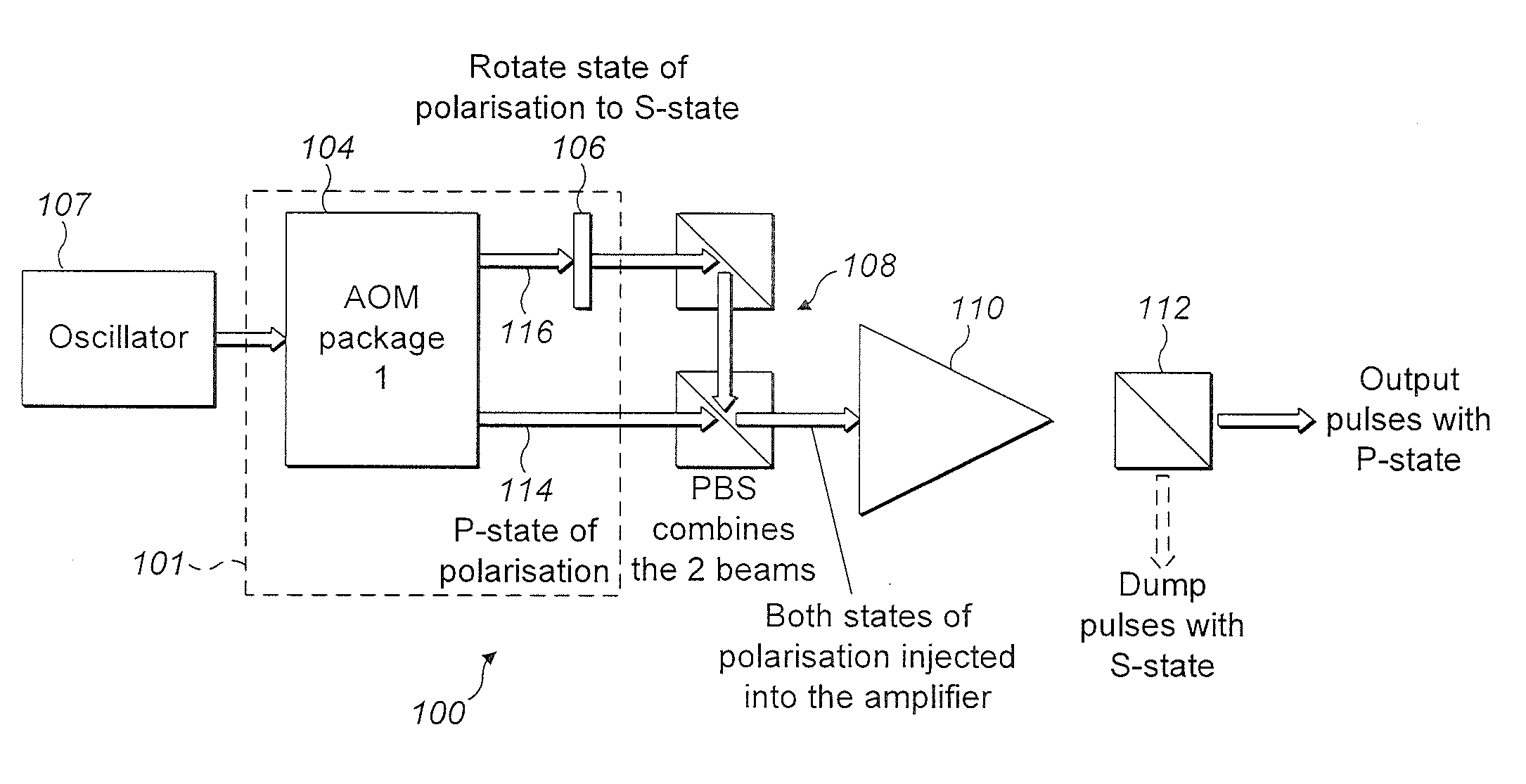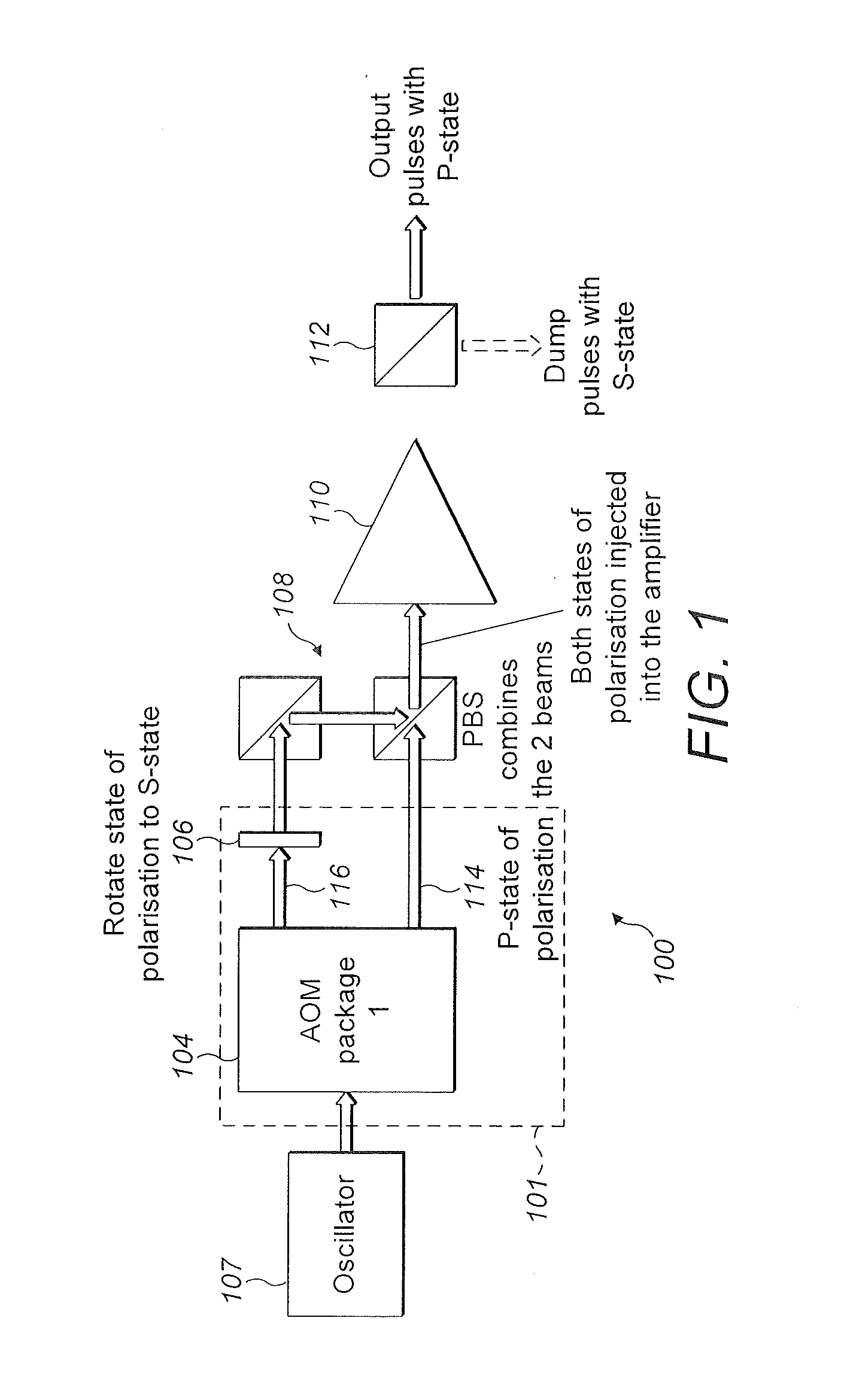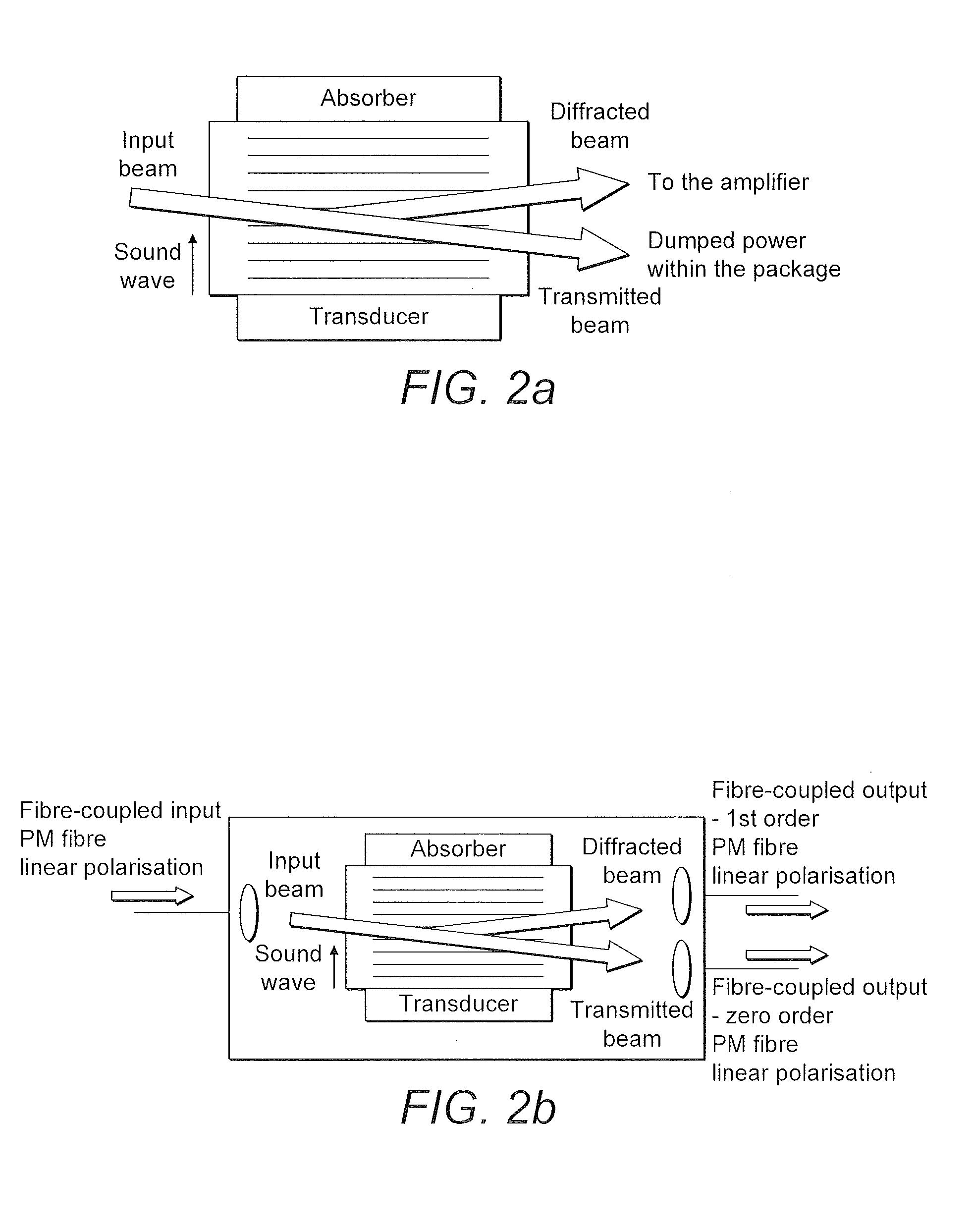Optical Systems
a technology of optical systems and optical components, applied in optics, laser details, laser devices, etc., can solve the problems of unsustainable, high amplifier gain, and inability to produce high noise levels between pulses, so as to prevent q-switching or excessive ase development, reduce the effect of high amplifier gain and large selectable modulation ra
- Summary
- Abstract
- Description
- Claims
- Application Information
AI Technical Summary
Benefits of technology
Problems solved by technology
Method used
Image
Examples
example 2
[0182]A second system design, also based on the use of polarisation and modulation, is shown in FIG. 6. The system of FIG. 6 is substantially the same as the system of FIG. 1, apart from the following modifications. The same reference numerals are retained for corresponding features.
[0183]This optical apparatus 101 of the system 600 of FIG. 6 includes two modulators 104a, 104b rather than one, with the zero order output of the first modulator 104a used as the input to the second modulator 104b.
[0184]The diffracted order output beam 602 from the first modulator 104a propagates with one state of polarisation and the diffracted order output beam 604 from the second modulator 104b passes through a polarisation rotator (phase plate) 106 such that the beam has an substantially orthogonal state of polarisation to the first modulator diffracted beam 602.
[0185]This system can be operated in a number of ways. It can operate as the same as the previously described system, can be operated (e.g...
example 3
[0189]The same approach can be used to achieve, not only pulse selection but fast pulse amplitude control and hence the ability to modify the pulse energy of each individual pulse following amplification. FIG. 9 shows an example of how this can be achieved with the aid of pulse timing diagrams.
[0190]One can achieve this performance using the two modulator example of FIG. 6 and by having both amplitude and digital control of each of the modulators. For AOMs amplitude control involves adjustment of the diffraction efficiency of light into the diffracted order. This is achieved by controlling the magnitude of the RF amplifier power which controls the size of the acoustic field within the AOM crystal. AOM amplitude control is well known per se to those skilled in the art.
[0191]For EOM devices, amplitude control involves changing the magnitude of the applied voltage to the crystal.
[0192]Referring to FIG. 6, maximum output pulse energy following amplification and polarisation can be achie...
example 4
[0196]FIG. 10 shows a non-limiting example of how the system may be implemented in an all-optical fiber approach, for example within a modelocked fiber laser MOPA system. The optical system 1000 of FIG. 10 is substantially the same as the system of FIG. 6, apart from the following modifications. The same reference signs are used for corresponding features.
[0197]In the example of FIG. 10, the modulators 104a, 104b comprise AOMs and are fiber coupled. The second modulator 104b comprises a standard single output, diffracted order AOM. The first modulator is customised to have both the diffracted and the zero order delivered through polarization-maintaining (PM) optical fiber 1002.
[0198]Instead of a phase plate 106, the optical apparatus 101 comprises a 90 degree splice 1004 between the polarization-maintaining optical fiber 1002 at the output of the second modulator and a second piece of PM fiber 1006. In this way, the state of polarisation from the second AOM can be rotated through 90...
PUM
 Login to View More
Login to View More Abstract
Description
Claims
Application Information
 Login to View More
Login to View More - R&D
- Intellectual Property
- Life Sciences
- Materials
- Tech Scout
- Unparalleled Data Quality
- Higher Quality Content
- 60% Fewer Hallucinations
Browse by: Latest US Patents, China's latest patents, Technical Efficacy Thesaurus, Application Domain, Technology Topic, Popular Technical Reports.
© 2025 PatSnap. All rights reserved.Legal|Privacy policy|Modern Slavery Act Transparency Statement|Sitemap|About US| Contact US: help@patsnap.com



